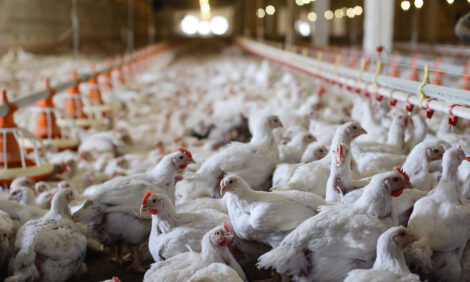



Jatropha as a New Livestock Feed Resource
FAO is encouraging the use of co-products of the energy crop, Jatropha, as new livestock feed resources to reduce food-feed competition.At a conference organised by the Brazilian Agricultural Research Corporation, EMBRAPA in Brasilia dedicated to ‘Advances in the detoxification of Jatropha and castor seed cake and their use as livestock feed’, FAO presented its animal feed and feeding programme including the opportunities and challenges in utilising Jatropha co-products as livestock feed and the possibilities of generating other value-added products using a biorefinery concept.
A Promising Livestock Feed from a Bioenergy Plant
There is a growing interest in Jatropha curcas L. as an oil plant, to help alleviate the energy crisis and generate income in rural areas of developing countries. J. curcas grows reasonably well in dry areas on degraded soils that are marginally suited for agriculture. The roots of the Jatropha trees reach water deep in the soil. The surface roots assist in binding the soil and can reduce soil erosion.
Jatropha oil extracted from seeds can be processed into less polluting biodiesel than fossil diesel. The oil can also be used to generate light and as a cooking fuel for poor rural families. Seed cake, a co-product generated in the process of oil extraction may be valuable animal feed after detoxification and can also be used as a fertilizer. Unlike other major biofuel crops, such as maize, soya and rapeseed, Jatropha is not used for food and it can be grown on marginal and degraded lands where food crops cannot grow. The leaves and nuts of J. curcas are toxic as they contain phorbol esters. The seed cake or kernel meal obtained after oil extraction cannot be used as livestock feed since a substantial amount of phorbol esters are present in these co-products.
Advances Made in the Detoxification Process
The EMBRAPA conference covered the analytical approaches for measuring anti-nutritional factors, toxins and allergens in Jatropha and castor bean meals and cakes and the strategies for detoxification of these materials. Brazil is aiming to be a major player in biodiesel production and a number of EMBRAPA institutions and Brazilian agriculture universities have started working on the utilization of Jatropha and castor seed cakes and meals as livestock feed. In Brazil, currently no satisfactory detoxification approach is available for Jatropha products; however, strategies have been developed for detoxification of castor seed cake.
Presentations from both Brazil and India showed satisfactory results on incorporation of detoxified castor cake in ruminant diets. It was emphasised that the detoxification technology for castor bean cake is available and the feed industry should engage in discussions with researchers and regulatory authorities for registration of the detoxified cake as livestock feed, so that it could be used as a feed resource.
FAO’s expert presented the challenges and opportunities in utilization of Jatropha products as livestock feed and generation of other value-added products using a biorefinery concept. He outlined the detoxification approaches for Jatropha kernel meal and protein isolate as well as the opportunities to produce value-added products such as pharmaceuticals, biopesticides, lignin, enzymes and blue dye. The expert also presented the analytical methods for quantifying the Jatropha toxin as well as anti-nutritional factors and bioassays for measuring biological activity of phorbol esters, the main toxin.
Jatropha platyphylla and a non-toxic genotype of J. curcas are reported to exist in Mexico. Their nuts are used for human consumption after roasting, and they do not contain phorbol esters. Data on comparative nutritional value of kernels and kernel meals from toxic and non-toxic genotypes of J. curcas and J. platyphilla showed that the nutritional value of these materials is very good and could be used for feed and food applications after heat treatment. Research on selecting better seed- and oil-yielding non-toxic Jatropha, and optimizing agronomic practices, including integrated pest and nutrient management will make these non-toxic Jatropha a good source of oil for human consumption. As for seed cake and kernel meal, they could be used as good protein sources for human consumption as well as for livestock feed.
Likewise, there is an urgent need to improve the germ plasm of the toxic Jatropha through selection and molecular techniques, so that seed- and oil-yields could be improved and flowering time synchronized. These studies along with the study of agronomic practices and nutrient and pest management are of paramount importance for full exploitation of Jatropha as an energy crop.
Related FAO Activity
One of the priorities of FAO’s Animal Feed and Feeding programme is to identify new and emerging feed resources in quest for enlarging feed resources and decreasing food-feed competition.
A detailed document outlining the opportunities and challenges in using co-products of the biofuel industry as livestock feed is in the final stages of production. It focuses on the nutritional values of an array of co-products from the biofuel industry and presents guidelines for their use in animal feeds. This document will be available in September 2012.
August 2012









